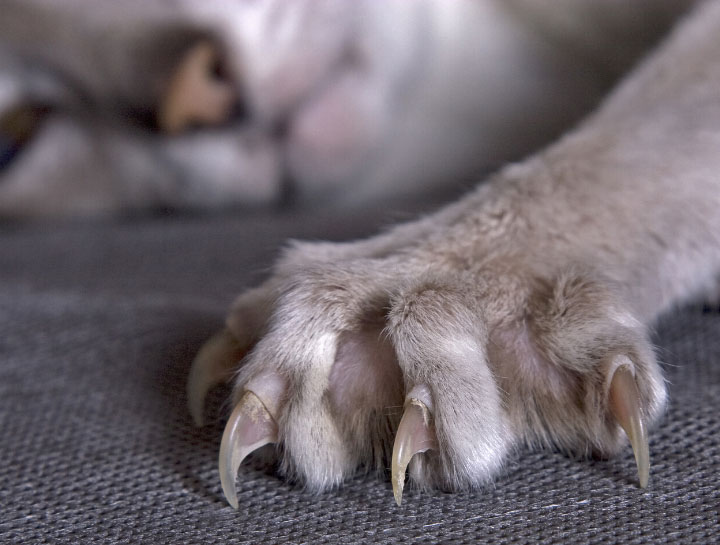Cat Declawing
Declawing options for felines
Despite its name, declawing is not as simple as removing a cat’s claws. It’s a surgery performed under general anesthesia that involves removing the last bone of every toe on the paw. The removal of that bone is necessary to prevent regrowth of the claw. Our Comfort Care Package, which is an optional and highly recommended add on for anesthetic procedures, prophylactically addresses stress colitis which causes diarrhea and stress gastritis which causes vomiting with an oral probiotic supplement and anti-emetic injection
Is cat declawing a medical necessity?
In short, no. It’s rare that the procedure is deemed medically necessary. Though it can become necessary to remove a claw if it’s damaged beyond repair or causes your cat prolonged pain, the majority of declaws are performed when behavior modification tools fail to prevent unwanted destructive behaviors like tearing up furniture.
What should I know before I have my cat declawed?
It’s important to understand that declawing is not like a regular nail trim. It’s a major surgery that involves amputation. It is, essentially, similar to removing the last joint of a human finger. Potential complications include anesthetic risk, pain, discomfort, bleeding, infection, and nerve damage.
You must also understand that scratching is a natural behavior for cats and they cannot be trained to stop. In fact, scratching leaves a scent mark and allows cats to stretch their spine while shedding the outer sheath of their claws. Declawing your cat will not prevent scratching, it will only prevent any damage associated with it.
What are the alternatives to declawing?
Luckily, there are a number of nonsurgical alternatives to declawing cats including:
- Regular nail trims
- Scratching posts and boards
- Vinyl nail caps
- Pheromone sprays and plug-ins
- Discouraging use of inappropriate scratching surfaces using sticky tape or tinfoil
- Using positive reinforcement to let your cat know what’s appropriate to scratch
We highly recommend exhausting all behavioral modification tools possible prior to considering having your cat declawed.
If you’re having trouble getting your cat to scratch on appropriate surfaces, give us a call at (256) 489-8387. We can assist you in exploring solutions.

